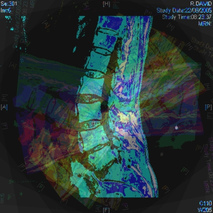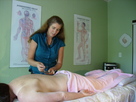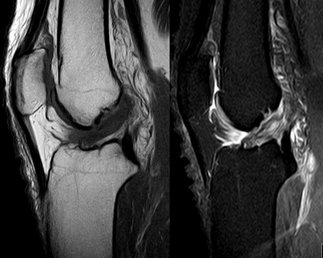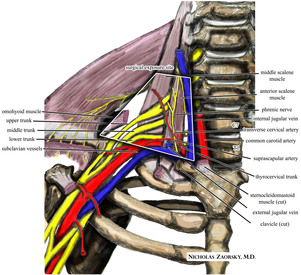- Home
- About Us
- TSPT Academy
- Online Courses
-
Resources
- Newsletter
- Business Minded Sports Physio Podcast
- Day in the Life of a Sports PT
- Residency Corner
-
Special Tests
>
-
Cervical Spine
>
- Alar Ligament Test
- Bakody's Sign
- Cervical Distraction Test
- Cervical Rotation Lateral Flexion Test
- Craniocervical Flexion Test (CCFT)
- Deep Neck Flexor Endurance Test
- Posterior-Anterior Segmental Mobility
- Segmental Mobility
- Sharp-Purser Test
- Spurling's Maneuver
- Transverse Ligament Test
- ULNT - Median
- ULNT - Radial
- ULNT - Ulnar
- Vertebral Artery Test
- Thoracic Spine >
-
Lumbar Spine/Sacroiliac Joint
>
- Active Sit-Up Test
- Alternate Gillet Test
- Crossed Straight Leg Raise Test
- Extensor Endurance Test
- FABER Test
- Fortin's Sign
- Gaenslen Test
- Gillet Test
- Gower's Sign
- Lumbar Quadrant Test
- POSH Test
- Posteroanterior Mobility
- Prone Knee Bend Test
- Prone Instability Test
- Resisted Abduction Test
- Sacral Clearing Test
- Seated Forward Flexion Test
- SIJ Compression/Distraction Test
- Slump Test
- Sphinx Test
- Spine Rotators & Multifidus Test
- Squish Test
- Standing Forward Flexion Test
- Straight Leg Raise Test
- Supine to Long Sit Test
-
Shoulder
>
- Active Compression Test
- Anterior Apprehension
- Biceps Load Test II
- Drop Arm Sign
- External Rotation Lag Sign
- Hawkins-Kennedy Impingement Sign
- Horizontal Adduction Test
- Internal Rotation Lag Sign
- Jobe Test
- Ludington's Test
- Neer Test
- Painful Arc Sign
- Pronated Load Test
- Resisted Supination External Rotation Test
- Speed's Test
- Posterior Apprehension
- Sulcus Sign
- Thoracic Outlet Tests >
- Yergason's Test
- Elbow >
- Wrist/Hand >
- Hip >
- Knee >
- Foot/Ankle >
-
Cervical Spine
>
- I want Financial Freedom
- I want Professional Growth
- I want Clinical Mastery
0 Comments
 Therapydia extended the voting deadline for Best PT Blog til 2/26 (tomorrow). The Student Physical Therapist was nominated as a top 5 finalist for the "Best Student Blog" category. If you enjoy reading our blog posts, please take 5 seconds to vote for us as your favorite student blog. Here is how to vote: 1)Go to: http://www.therapydia.com/blog-awards 2) Scroll down to the bottom of the page and click "Vote Now" button. 3) Vote for The Student Physical Therapist -James Heafner, Chris Fox, Brian Schwabe under Best Student Blog Thanks for the support!  A 2013 Cochrane review was recently published regarding the effects of Spinal Manipulative Therapy (SMT) for acute low back pain. The review identified 20 randomized control trials with inclusion criteria being adults 18 or older with a mean duration of low back pain of six weeks or less & participants with or without radiating pain. In general the review found that SMT for the outcomes of pain and functional status had low to very low quality evidence. This suggests that there is no difference when treating a patient with SMT vs. another intervention. The conclusion stated that "SMT is no more effective for acute low back pain than inert interventions, sham SMT, or as adjunct therapy. SMT also seems to be no better than other recommended therapies." For someone who is entering an Orthopaedic Residency with a strong emphasis in manual therapy, this information was astounding. I have seen the short and long term benefits of manipulation and mobilization first-hand in the clinic. How could the evidence be so contradictory? When discussing this article with an OCS/ fellow trained manual therapist, he had the following comments to make: "This review like many others on manipulative therapy have similar pitfalls: Operational definitions- Spinal manipulative therapy (SMT) includes every hands on intervention: thrust, non-thrust, mobs, etc. I thinking it would make for a more valid study to really try and separate the types of therapies out. Apples and oranges in my book. SMT alone- we have known that SMT without exercise for low back and neck pain provides very minimal effect. Let’s move on from the thinking that SMT is a panacea and look at what actually happens in the clinic. Minimal subgrouping of patients- classification of patients is vital. Any physical therapist can perform SMT, regardless of training or expertise. Whether the patients are sub-grouped based off of a CPR, patient preference, or therapist experience/critical thinking, not all patients will respond from treatment types the same. After all LBP is a symptom and not a diagnosis. Multiple low quality studies- there is still a void in the literature. Minimal high quality articles regarding SMT are performed by PT’s using the above qualifiers. Therefore, most RCT’s are really just comparing a bunch of low quality research and finding the same conclusions. This study is helpful in that it adds to the body of literature. However, I don’t think it is clinically useful, because it does not adequately describe practice patterns. Humans are extremely complex and manual therapy will only be THE answer in a small subgroup of patients. Everyone else needs a uniquely tailored solution based on the biopsychosocial state, fitness level, and impairments." I found all of these points to be true. Additionally, it allowed me to realize that I too often skim to the conclusion and results section of an article without fully interpreting the research process that goes into finding these results. Understanding the operational definitions and the quality of studies that were researched will alter the authors conclusive points and change your ability to translate this information into a practical clinical setting. The biggest battle which stands between us and our research is the complexity of the human being. We are all so unique. While 2 patients may present the same impairments, there are a myriad number of factors that will go into how they respond to your treatment session. Reference:
Rubinstein S, et al. "Spinal Manipulative Therapy for Acute Low Back Pain: An Update of the Cochrane Review." SPINE. 2013; 38.3: E158-E177.
 In a recent Dr. Oz episode, the television physician discusses "cutting edge" solutions for back pain. Some of these solutions include ultrasound, tiger balm patches, and bumpy balls to help relieve pain. As healthcare professionals, we know the limited evidence regarding these interventions alone. In response, Dr. Rockar, president of the APTA, wrote a letter to the produces of the Doctor Oz show. He discusses that "physical therapy treatment for back pain is on evidenced based exercises to improve strength and flexibility, manual therapy to improve the mobility of joints and soft tissues, and patient education on ways to enhance recovery, prevent and relieve pain, and avoid recurrence. These avenues of care offer long-term solutions rather than temporary, intermittent relief." Unfortunately, Dr. Rockar's letter will not be seen by millions of viewers like Dr. Oz's episode. Therefore, it is our responsibility to pass this information along to our patients. Read the full letter here. Reference:
"APTA Responds to Dr. Oz Show Regarding Segment on 'Cutting-Edge Solutions for Back Pain'" Letter to Dr. Oz Producers. 5 Feb. 2013. APTA Responds to Dr. Oz Show Regarding Segment on 'Cutting-Edge Solutions for Back Pain' N.p., 5 Feb. 2013. Web. 11 Feb. 2013.
 Therapydia is currently hosting the "PT Best Blog" Awards. The Student Physical Therapist was nominated as a top 5 finalist for the "Best Student Blog" category. If you enjoy reading our blog posts, please take a minute to vote for us as your favorite student blog. Here is how to vote: 1)Go to: http://www.therapydia.com/blog-awards 2) Scroll down to the bottom of the page and click "Vote Now" button. Thanks for the support!  While this post from Synergy Physio Blog is directed towards the consumer, as physical therapists it is important to remember that pain is not a requirement for physical therapy. We are Movement Analysis Specialists. We have the unique ability to detect movement dysfunction before pain and disability occur. If a client is having trouble with activities of daily living or struggling to perform a recreational hobby, they are a candidate for physical therapy. With our medical model changing to a "wellness model," we need to advocate to our patients that pain should not be the only indicator for a physical therapy evaluation. Additionally, we cannot let old age continue to be a simple answer to chronic pains and decreased function. Gross function should NOT decrease with age. We must educate our patients on the benefits physical therapy and the relationship to maintaining or increasing function versus simply reducing pain. |
Dr. Brian Schwabe's NEW Book in partner with PaleoHacks!
Learn residency-level content on our
Insider Access pages We value quality PT education & CEU's. Click the MedBridge logo below for TSPT savings!Archives
July 2019
Categories
All
|








 RSS Feed
RSS Feed